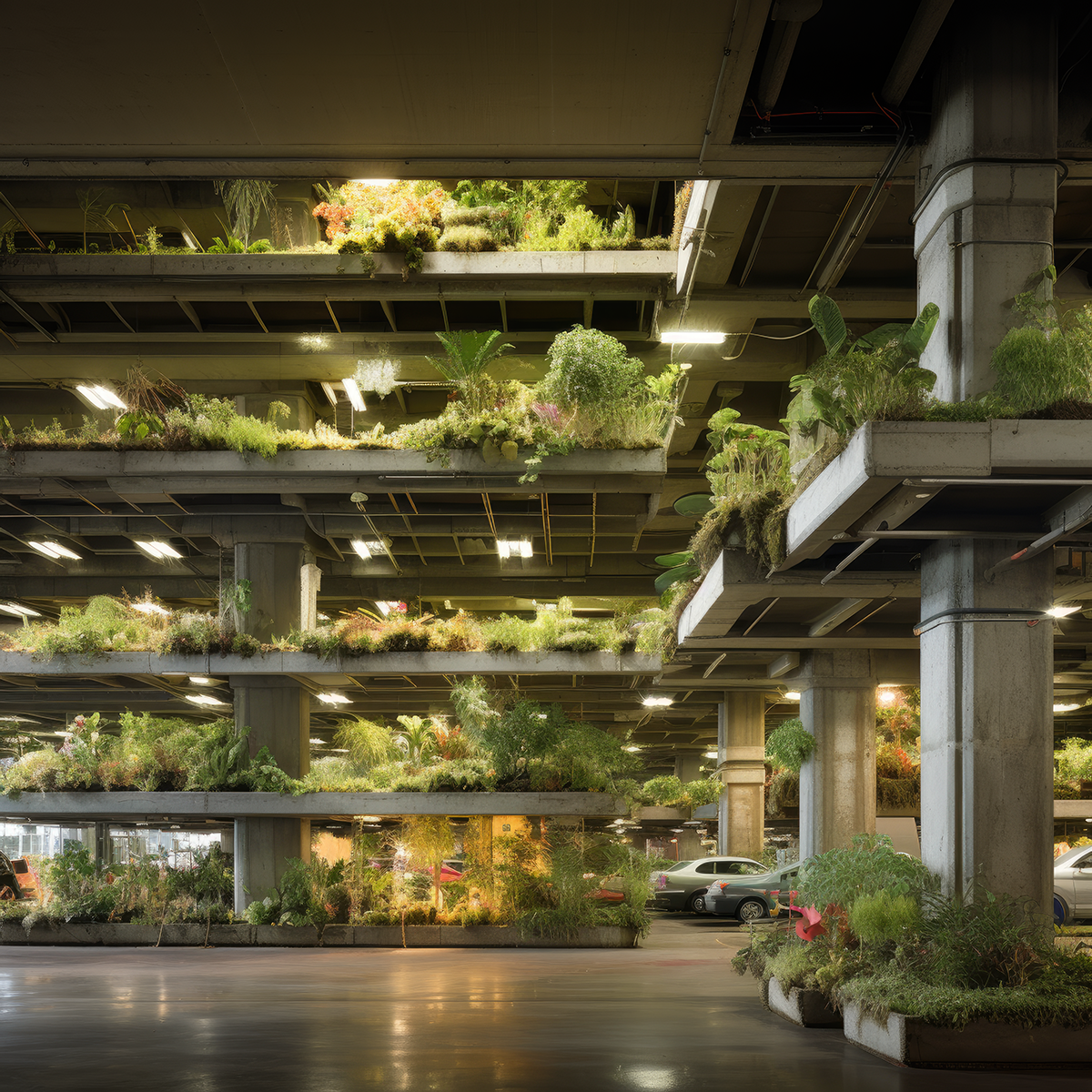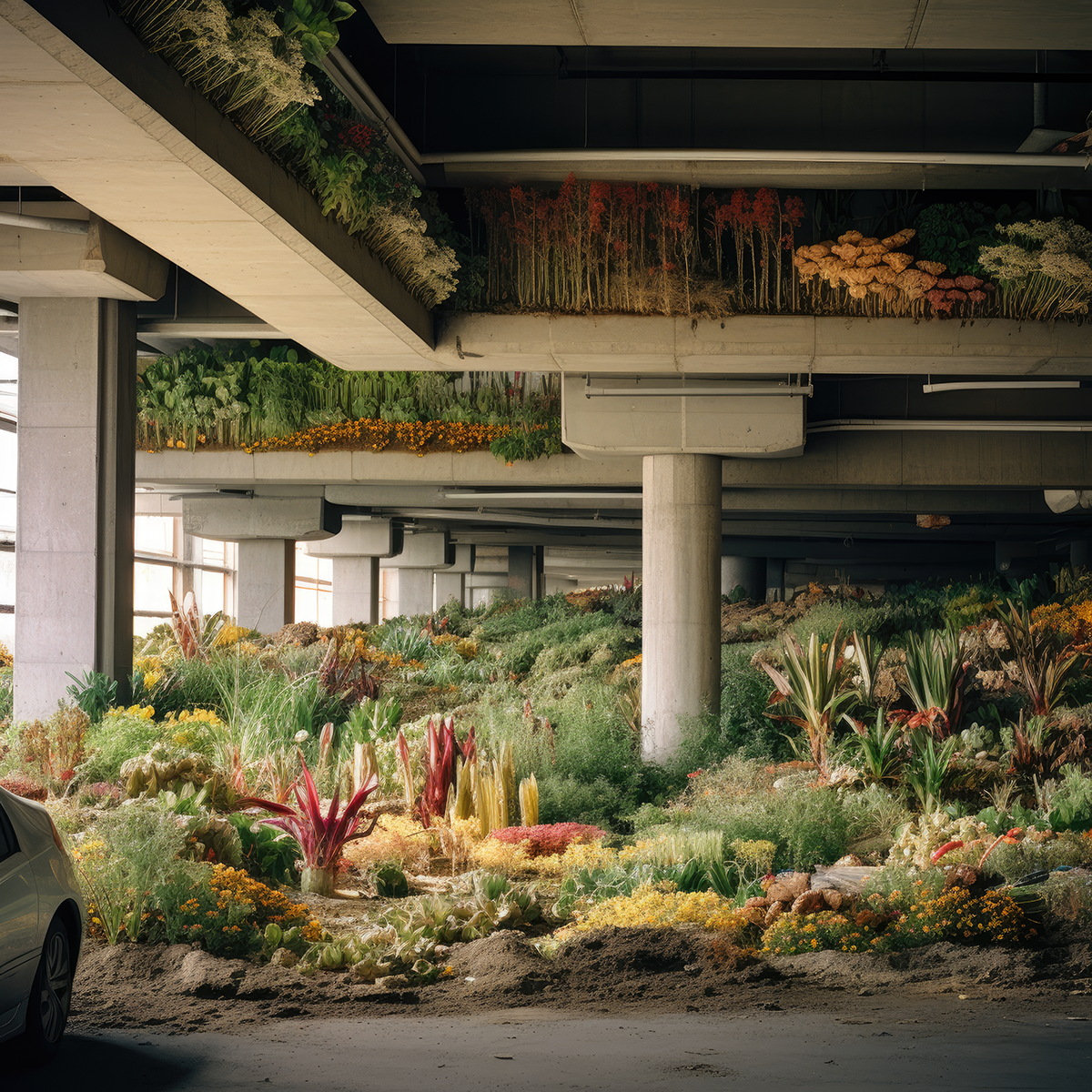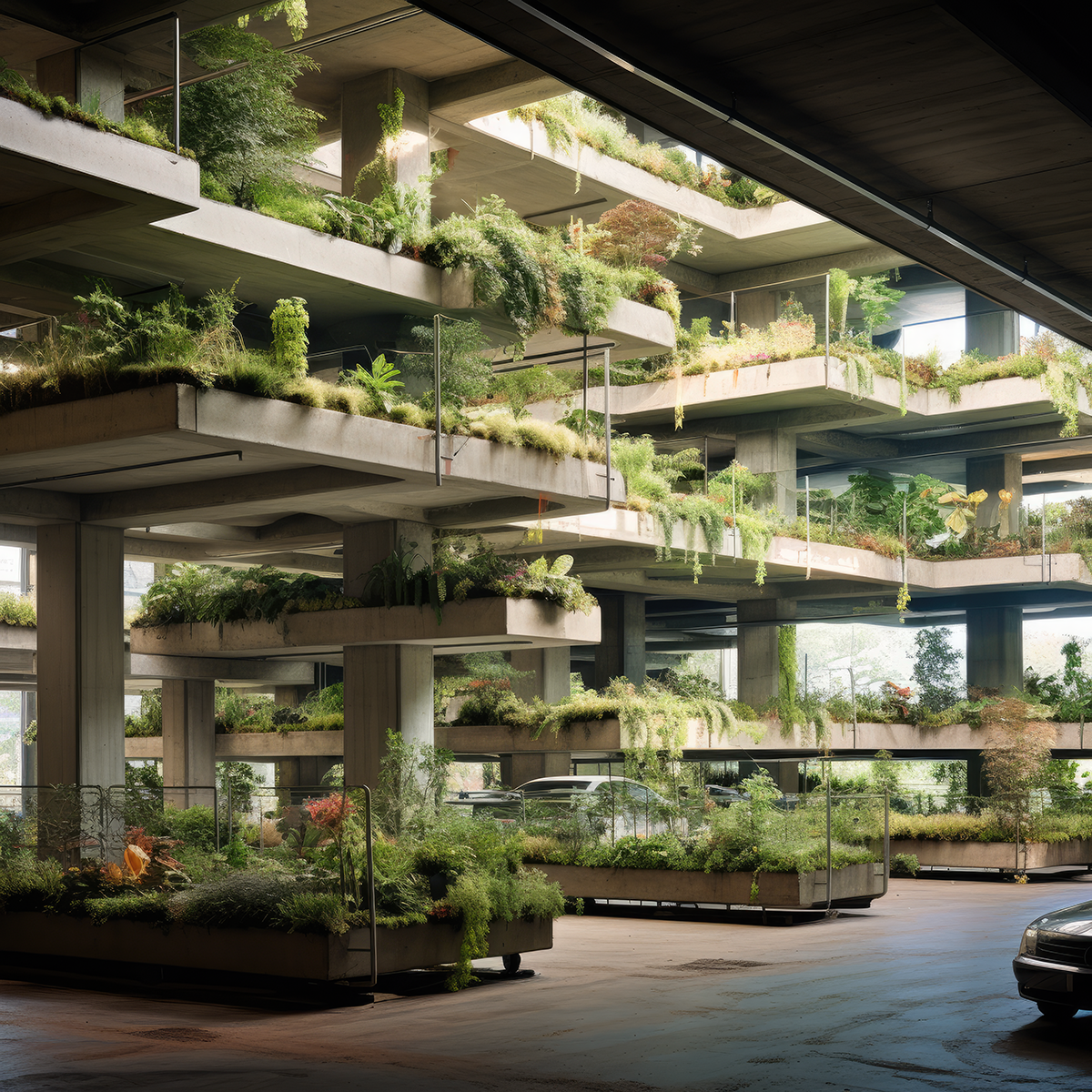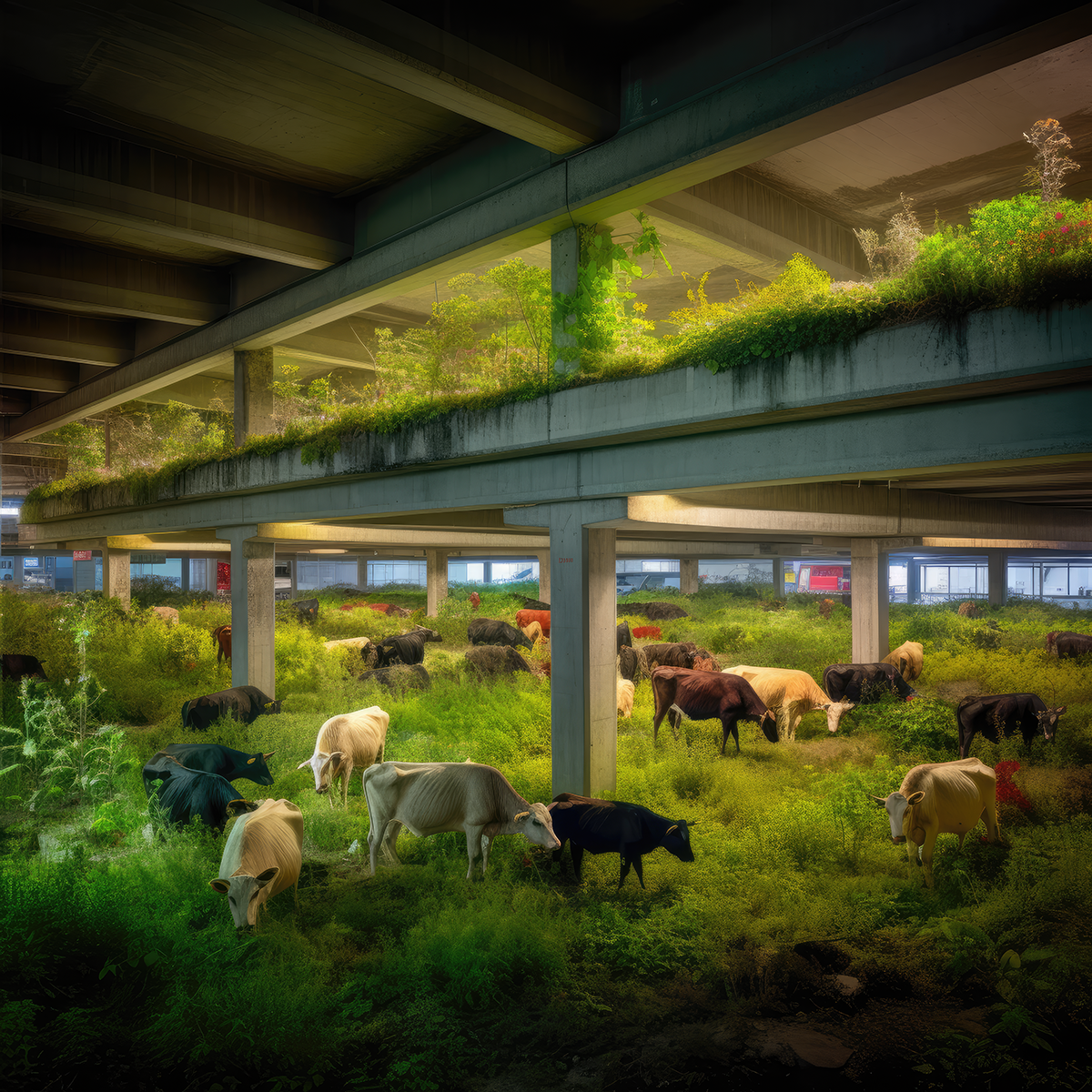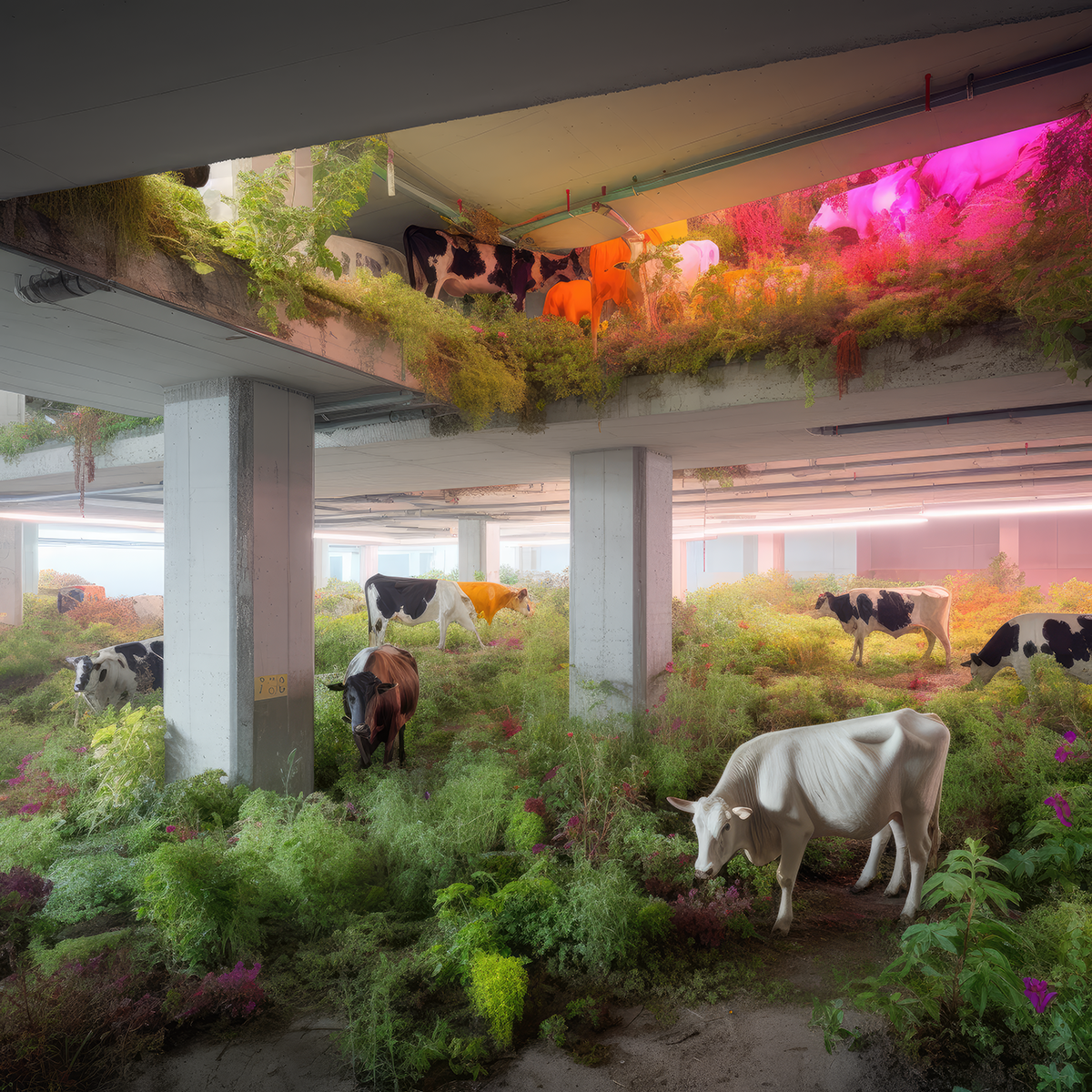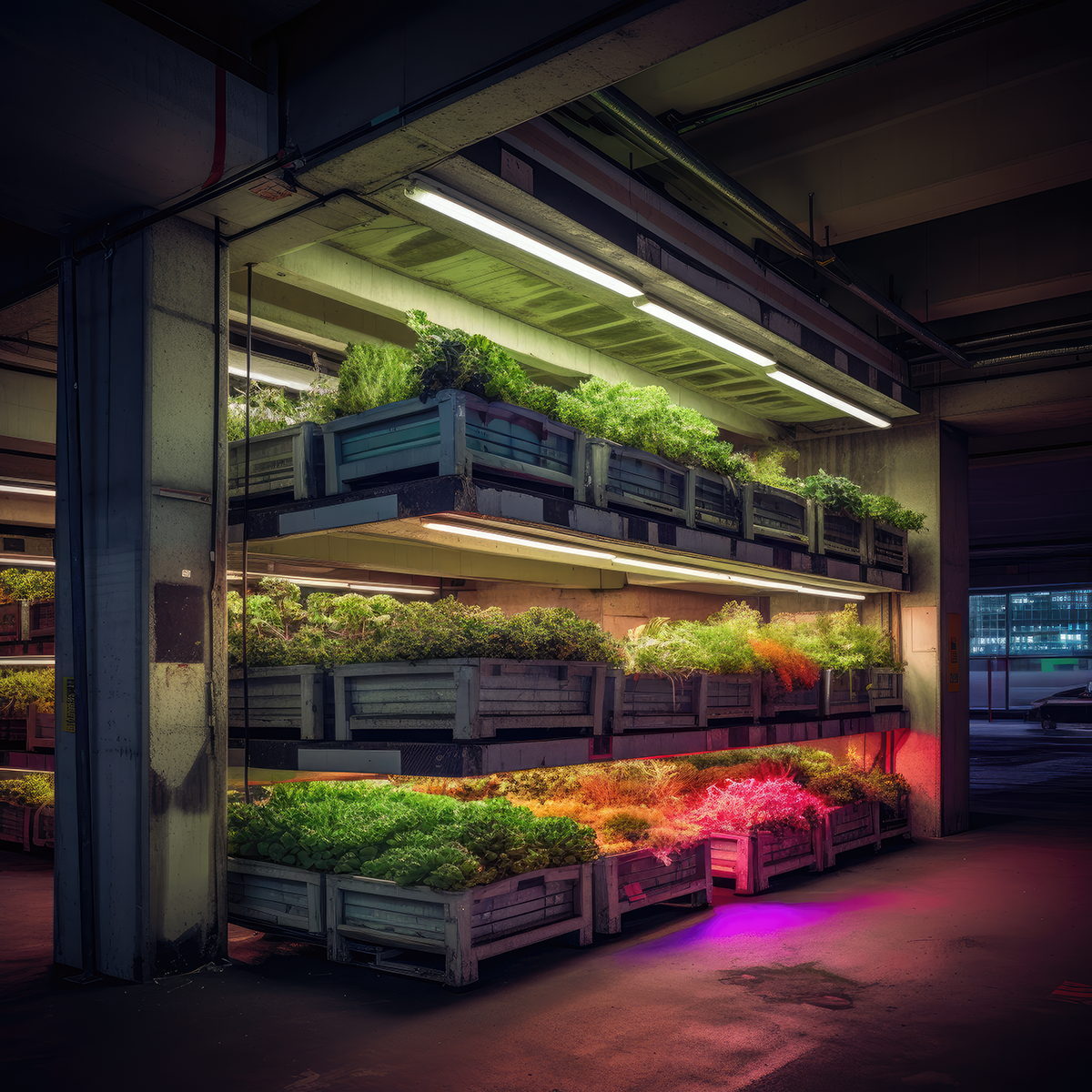Carbon Hinterlands
Research Project
2023
When autonomous vehicles enter our everyday lives, parked cars will disappear from our cityscape. With this change, parking garages in our city centers will also become superfluous. Parking garages built of prefabricated reinforced concrete offer an enormous load-bearing capacity due to their construction. But also a burden of legacy. Only under high carbon expenditure to remove, we should seek for new lives of these buildings in our cities. What if we start instead of cars to park farming? Parking garages are also a way to bring back the hinterland into our cities. An ideal ground for local vertical farms, and the possibility to return biodiversity back to the cities.
This series re-imagines parking as parks – abandoned parking lots adhoc refurnished by urban farmers, gardeners, and animals.
